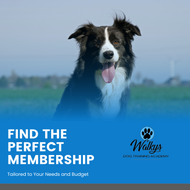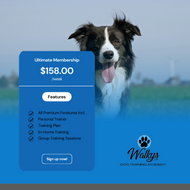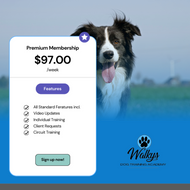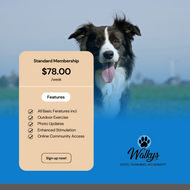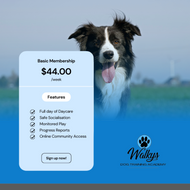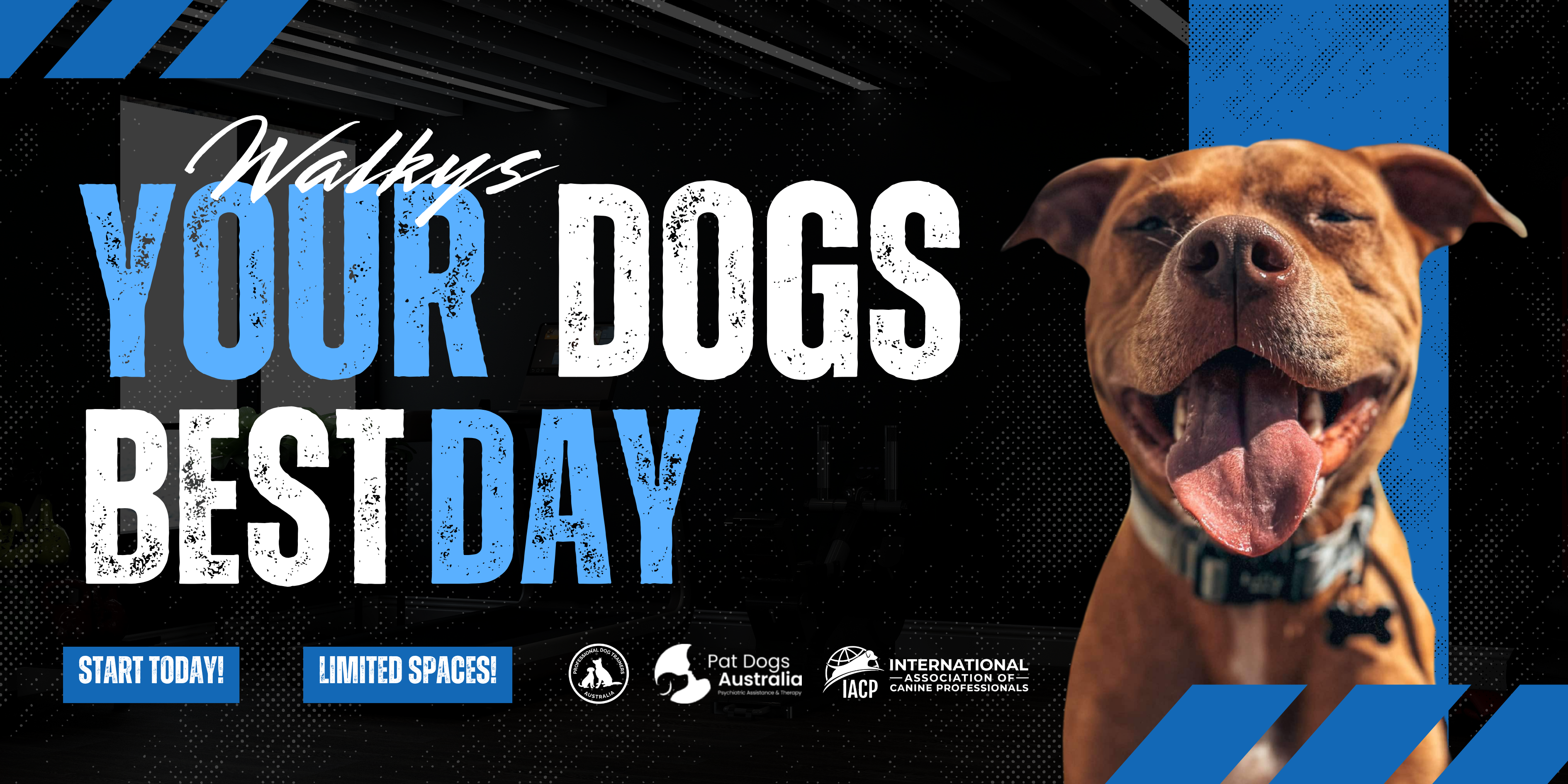
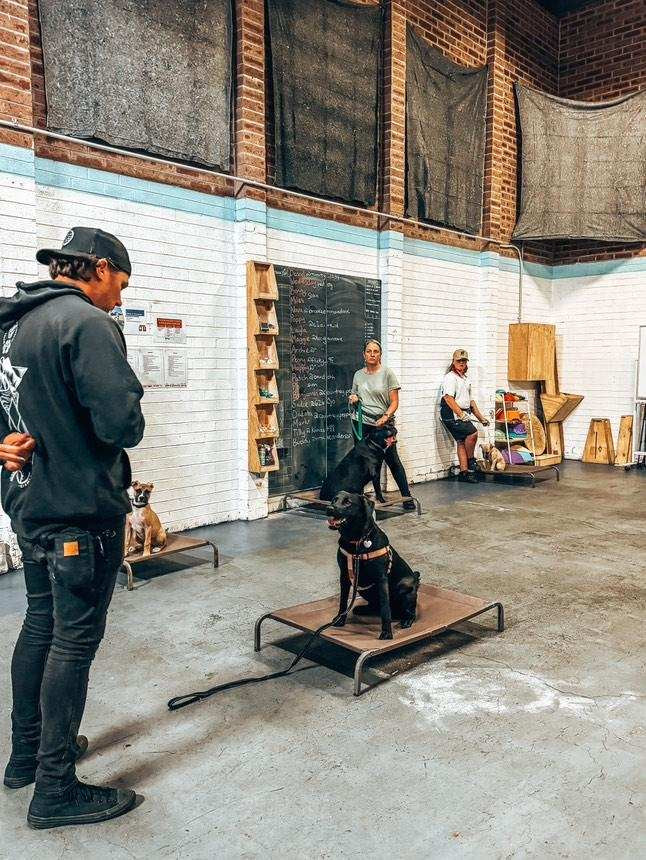
September 6, 2024
The 3-3-3 Rule of Adopting a Rescue Dog: Incorporating Nutrition, Crate Training, and Place Training
Adopting a rescue dog is an incredibly rewarding experience, but it comes with unique challenges. Rescue dogs often come from backgrounds of stress, neglect, or abuse, and they need time to adjust to their new environment. The 3-3-3 rule offers a helpful framework for understanding the three phases a dog goes through when settling into a new home. These phases occur over the first 3 days, 3 weeks, and 3 months. Along with patience and consistency, proper nutrition, crate training, and place training play vital roles in helping your dog feel secure and thrive in their new home.
The First 3 Days: Initial Adjustment
In the first 72 hours, your dog is likely to be feeling nervous, anxious, and unsure. They are adjusting to a new environment, new people, and new routines. This is an essential time to set the tone for their future progress by introducing stability through crate training and proper nutrition.
Behaviour to Expect:
- Fear and Anxiety: Your dog might appear timid, shy, or overly cautious. They may hide, refuse to engage, or act out of character.
- Loss of Appetite: It's normal for a rescue dog to show signs of stress by refusing food during the first few days.
- Disorientation: Everything is new and overwhelming, so accidents may happen, and their behaviour may seem erratic.
Tips for the First 3 Days:
- Nutrition: Offering high-quality, easily digestible food can make a big difference during this adjustment period. Nutritional support helps your dog feel better physically, which can positively impact their mental state. During stressful periods, splitting the daily intake of food over multiple meal times will assist with digestion, easing the strain on the body and ensuring your dog can handle the changes more comfortably. This gradual feeding process can make a positive impact, helping your dog settle in more smoothly.
- Crate Training: Set up a comfortable crate in a quiet area to give your dog a safe space to retreat. Introduce the crate slowly, making it inviting with treats and soft bedding. A crate becomes a source of comfort and security, helping to reduce anxiety.
- Place Training: Begin teaching your dog to settle in a specific area using the 'place' command. Like crate training, this encourages calm behaviour and helps the dog understand where they can relax. It also promotes structure and routine from the start.
The First 3 Weeks: Settling In
As your dog becomes more comfortable, they will start to explore their new environment. This is when their true personality begins to emerge, and they may begin to test boundaries. It’s an ideal time to reinforce healthy habits, such as good nutrition, structured crate time, and further practice of place training.
Behaviour to Expect:
- Increased Confidence: Your dog will start feeling more at ease, but this can lead to boundary testing or disobedience.
- Behavioural Issues: Separation anxiety, chewing, or barking may start to surface as your dog adjusts to their new life.
- Exploration and Routine: Your dog will become more curious and may begin to relax into your home’s routine.
Tips for the First 3 Weeks:
- Balanced Nutrition: As their appetite returns, focus on providing a balanced diet tailored to their needs. Good nutrition supports their immune system, improves energy levels, and aids in behavioural balance. Continue splitting meals if necessary to support digestion and minimise stress.
- Crate Training Continuation: Continue using the crate as a calm space. During this phase, your dog may begin to feel secure enough to spend more time in the crate without showing signs of distress. Gradually increase their crate time and reinforce its use during periods of separation.
- Place Training Expansion: Use the 'place' command to increase the time your dog can remain calm in one spot. This will help with impulse control and reinforce structure. Combine training with crate sessions to create a more well-rounded routine that promotes calmness and reduces stress.
The First 3 Months: Full Integration
By the third month, your dog should be starting to feel truly comfortable. Trust between you and your dog will be more established, and they will have a clearer understanding of household rules and routines. It’s a critical time to continue focusing on training and nutrition to ensure long-term success.
Behaviour to Expect:
- Trust and Affection: Your dog will likely become more affectionate and playful, reflecting their increasing comfort.
- Stabilisation of Behaviour: Behaviour should start to normalise, though some issues, like lingering anxiety or occasional disobedience, may still arise.
- Increased Confidence: Their personality will shine through, and they’ll become more comfortable in their environment.
Tips for the First 3 Months:
- Ongoing Nutritional Support: As your dog settles into their new life, nutritional needs may change. Continue providing a diet that meets their specific requirements for age, size, and health status. Proper nutrition not only supports their physical health but also helps with mental clarity and behavioural stability. For dogs prone to stress, continue feeding multiple small meals throughout the day to aid digestion and prevent digestive upset.
- Crate as a Sanctuary: By now, the crate should feel like a true sanctuary for your dog. Use it during quiet time or when you need to leave the house to ensure they remain calm and secure.
- Reinforce Place Training: At this stage, your dog should be able to stay on their place for longer periods, even with mild distractions. Use this training to build further impulse control and provide mental stimulation. This is especially helpful for dogs that may have lingering anxiety or energy that needs management.
The Importance of Nutrition Throughout the 3-3-3 Rule
Proper nutrition plays a crucial role in a rescue dog's transition. It’s not just about feeding them; it’s about supporting their overall health during the adjustment period. Rescue dogs may have been malnourished, and a balanced diet can correct deficiencies and improve their energy levels and mood. Good nutrition can also aid digestion, support a healthy coat, and boost the immune system. Moreover, feeding multiple small meals throughout the day is particularly beneficial during stressful periods, as it eases the strain on digestion and supports better nutrient absorption.
Crate Training and Its Benefits
Crate training throughout the 3-3-3 rule provides structure and security for a dog in transition. In the early days, the crate acts as a den-like safe space where your dog can decompress. As they settle in, the crate becomes a tool for managing anxiety and promoting independence. A dog that is comfortable in a crate is less likely to develop destructive behaviours when left alone, and it offers them a predictable, secure environment in an otherwise new world. Over time, the crate can become a positive place your dog associates with calmness, safety, and rest.
The Role of Place Training in Establishing Boundaries and Calm
Place training is an invaluable tool in teaching a dog to remain calm and relaxed, even in the face of distractions. From the very first days in their new home, a dog can begin to learn the 'place' command. This offers them an alternative to being in the crate and reinforces the concept of self-control. As your dog progresses through the 3-3-3 phases, place training provides consistency, structure, and predictability, which helps reduce anxiety and encourages desirable behaviours.
Common Mistakes to Avoid During the 3-3-3 Period
While adopting a dog is immensely gratifying, there are common mistakes new owners make that can hinder their dog's progress. These include:
- Overwhelming Your Dog: Introducing too many new experiences at once can cause stress.
- Inconsistent Routines: Dogs thrive on structure. Inconsistent feeding, training, or crate use can increase anxiety.
- Neglecting Nutrition: A poor diet can exacerbate behavioural problems. Focus on high-quality food tailored to your dog’s needs, and ensure their meal routine supports their digestion and overall well-being.
- Neglecting Training: Skipping crate or place training can result in behavioural issues like separation anxiety or destructive behaviour.
Final Thoughts
The 3-3-3 rule is an effective guide for helping your new rescue dog adjust to their forever home. Patience, love, and consistency are key, but so are practical approaches like proper nutrition, crate training, and place training. These elements provide your dog with a sense of security, predictability, and calm that will allow them to flourish in their new environment.
By understanding your dog’s emotional journey and supporting them through these phases, you are creating a strong foundation for a lifelong bond. Your dog will not only feel secure, but they will also thrive under your care, becoming a happy, well-adjusted member of your family.
FAQs
What is the 3-3-3 rule?
The 3-3-3 rule outlines the phases a rescue dog experiences when adjusting to a new home: the first 3 days, 3 weeks, and 3 months.
How does nutrition affect my dog's adjustment?
Good nutrition supports your dog's overall health, improves energy levels, and stabilises their behaviour. A balanced diet is essential for their mental and physical well-being. Splitting meals during stressful periods aids digestion and supports better nutrient absorption.
Why is crate training important during the adjustment period?
Crate training provides a safe, structured environment where your dog can feel secure. It helps manage anxiety and offers a space for calm and rest, which is crucial for rescue dogs.
How does place training help with my dog’s adjustment?
Place training teaches your dog to remain calm in a specific area. It provides structure and helps them learn impulse control, which is important for managing anxiety and excitement


